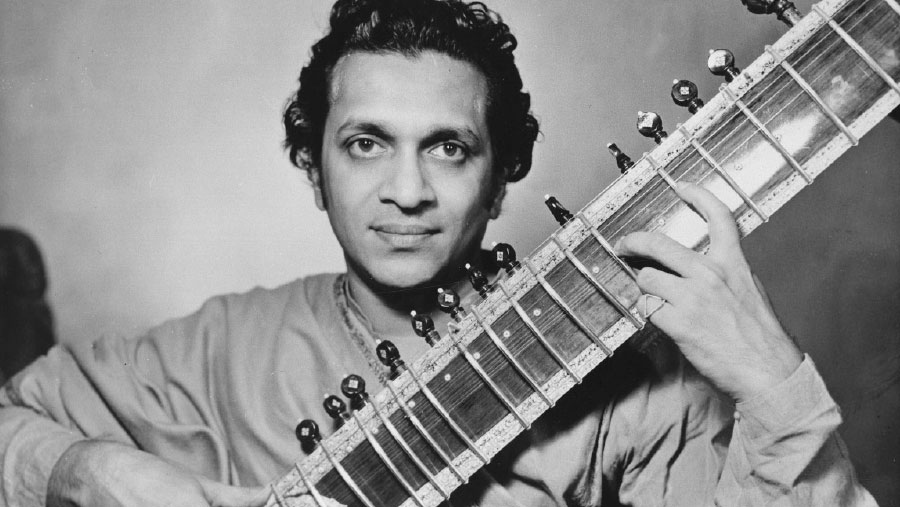
The Music
Ravi Shankar
Among The Apu Trilogy’s many claims to fame is the fact that the music for all three films was created by the legendary Ravi Shankar. At the time, he was virtually unknown in the West, but he was already famous in India as a performer of Indian classical music, and well-known as a composer. His subtle yet stirring music for Pather Panchali, Aparajito, and Apur Sansar is one of the defining characteristics of The Apu Trilogy.
Satyajit Ray and Shankar had known each other for over ten years when Ray approached Shankar to compose music for Pather Panchali in late 1954. Working around his concert commitments, Shankar composed and recorded music over the course of one night, working until 4 a.m. as Ray projected selected scenes for him.
Shankar chose to use no Western instruments. In addition to his sitar, three other string instruments were selected—the tarshehnai, the bhimraj, and the sarod—along with the pakhwaj for percussion and a haunting flute. Ray ended up with more than enough material and took it to the editing room. One piece of music was so lovely that, while editing, Ray created a sequence—the dance of the water bugs as the monsoon approaches—just to showcase it. Perhaps the most memorable use of Shankar’s music is near the end of the film, when Apu’s father, Harihar, returns home after having been gone for months and shows his wife a new sari for Durga, not knowing that their daughter has died. Sarbajaya cries out in anguish, and Ray uses only Shankar’s raga, played in high notes on the tarshehnai, to express her agony.
For Aparajito, Shankar was again busy touring but found a few hours of time for Ray. The session was almost too brief, and in the end, Ray felt he barely had enough to complete his film. However, for Apur Sansar, which involves more locations, settings, and tonal changes than the other films, Shankar had more time to devote, even bringing in violins, cellos, and a piano for one of the pieces, and recording over the course of three days.
The Apu Trilogy’s enormous success helped catapult Shankar to stardom around the world. In the sixties, he was instrumental in sitar music’s becoming an international sensation, performing in a revelatory, climactic set at the 1967 Monterey International Pop Festival in California; in the seventies, he toured with George Harrison. In the late seventies, the music from the Apu Trilogy soundtracks was released as an LP. In 2007, the Guardian placed Pather Panchali at number four on its list of the greatest film soundtracks of all time.

